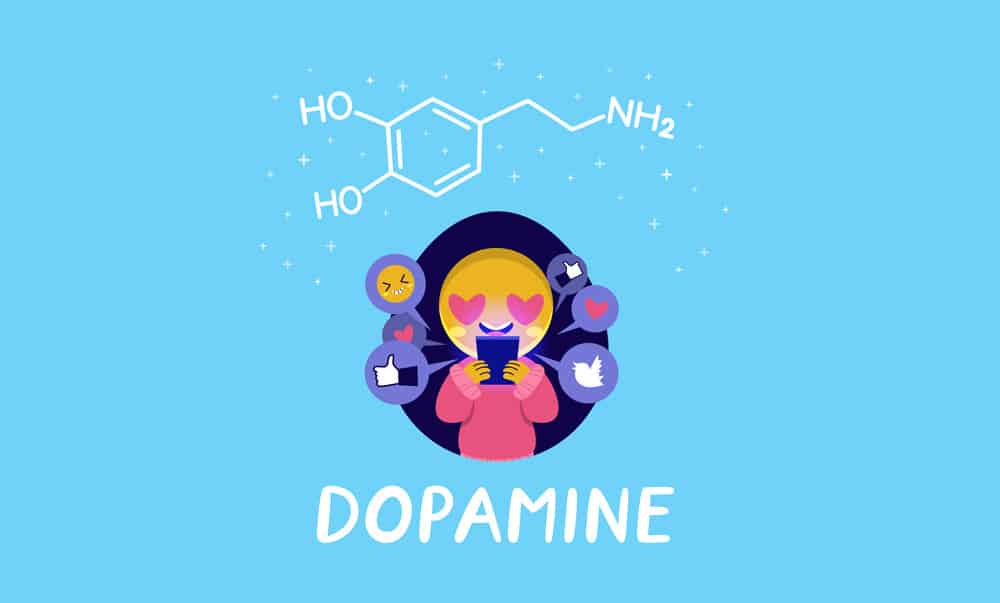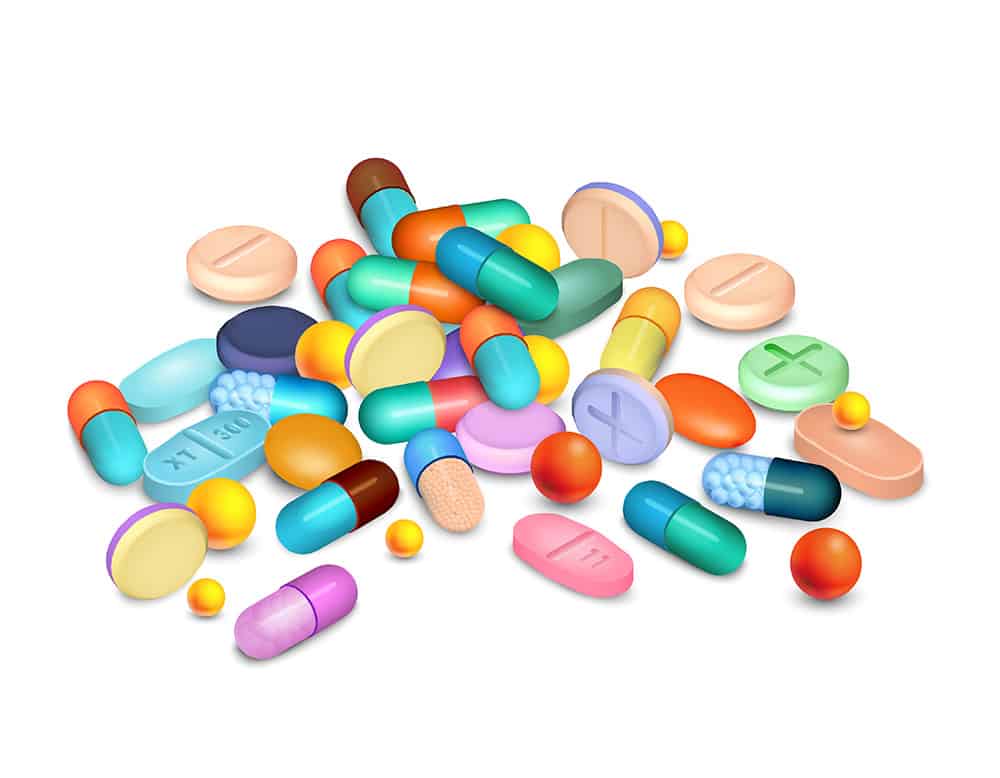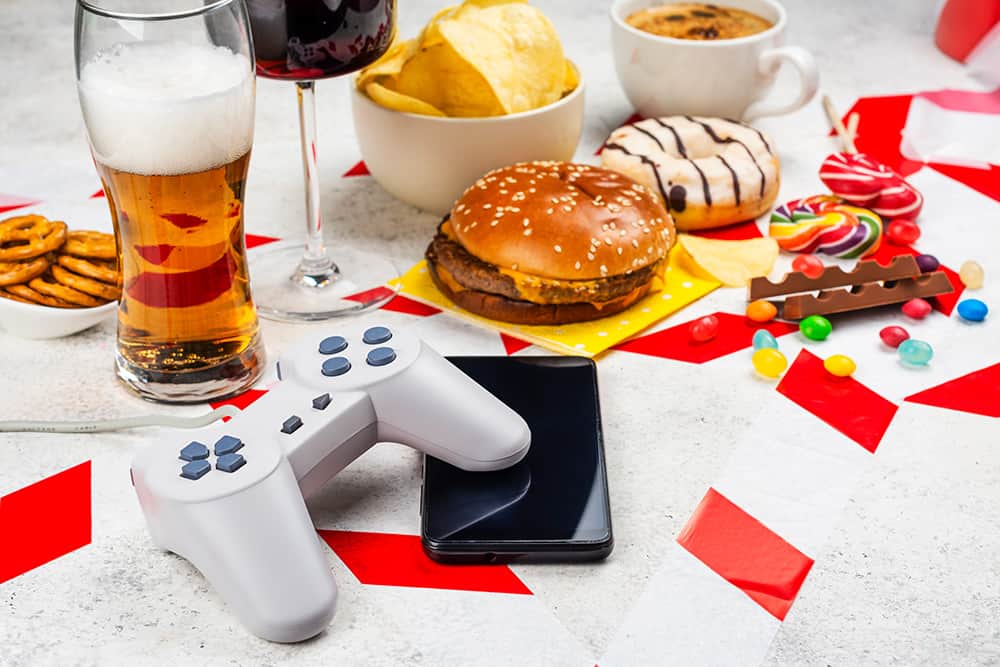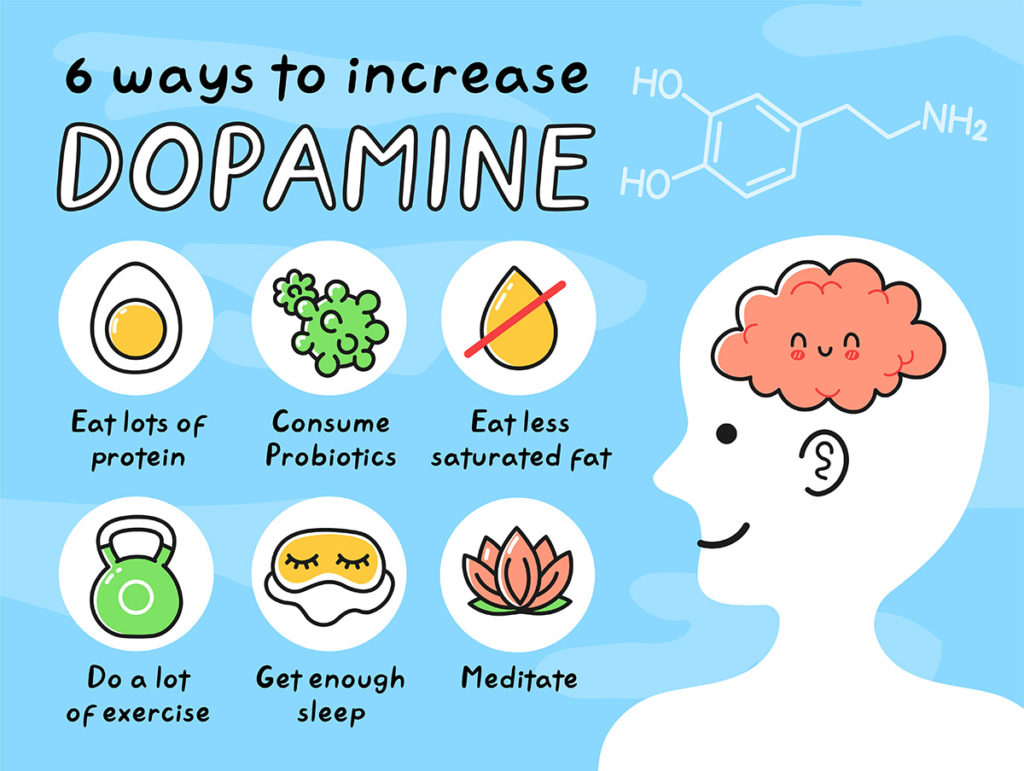
What is the Dopamine Theory of Addiction
The dopamine theory of addiction is the staple of modern psychology for treating addictions, including video game addiction.
The theory of dopamine addiction may provide insight into how the regulation and release of dopamine are crucial for treating and understanding why gamers develop gaming problems.
Dive Deeper: How Dopamine Impacts Gaming
It’s important to understand how our brains respond to the stimulus of video games. In many ways, the mechanism of a dopamine release when playing video games is similar to the dopamine release experienced with drugs and other addictive substances. However, more research is needed to investigate this further.
In this article, you’ll learn what we know thus far as to the following questions:
- What is the dopamine theory of addiction?
- How does dopamine relate to drug addiction?
- How does dopamine relate to gaming addiction?
What is the Dopamine Theory of Addiction?

According to Melis et al. 2005, the dopamine theory of addiction is classified as:
“In brief, the hypothesis contends that decreased dopamine function in addicted subjects results in a decreased interest to non-drug-related stimuli and increased sensitivity to the drug of choice, leading to propose that restoring dopamine function might be therapeutically advantageous.”
Or, if we summarize it in more simple terms:
Addictions increase dopamine to such an extent that once the drug or the stimulus is gone, our body is unable to replicate the same amount of dopamine naturally. Therefore, when someone is addicted, only the drug or the stimulus someone is addicted to can raise dopamine to the required levels.
Therefore, the key towards overcoming an addiction is to restore the ability of the body to create dopamine through different means naturally, without the drug or the stimulus someone is addicted to.
What is Dopamine?
Dopamine is a neurotransmitter in our brains responsible for the feeling of pleasure. Our body produces it when we feel pleasure, and it is then transmitted to nerve cells.
Dopamine affects different bodily functions, including learning, motivation, heart rate, blood vessel, kidney function, sleep, mood, lactation, movement, attention, and nausea.
When someone is addicted, their natural ability to produce dopamine is disturbed. They are only able to produce sufficient dopamine when they take the drug, drink another glass of alcohol, or play another round of their favorite video game – or else they suffer from withdrawal symptoms. The theory applies to all types of addiction.
History of Dopamine Theory of Addiction
Since the mid-1950s, scientists have learned that addictions are caused by the disruption of dopamine production in the affected person’s brain.
Olds, Milner & Their Rats
The first discovery of a reward system in the brain came in 1954 when Olds & Milner conducted a study on rats to determine where dopamine is produced in the brain.
Olds and Milner started the experiment by putting rats in a large-levered Skinner box. This box was set up so that it included a lever that the rats could press. When the lever was pressed, the rats would receive electrical stimulation to the septic region of the brain, which is known as the pleasure center.
The experiment included “acquisition” and “extinction” periods. The acquisition was when rats pressed the button, and they received electrical shocks. The extinction period was when the electrical current was blocked, even if the rats pressed the lever.
The results?
The overwhelming majority of lever presses happened during the acquisition phase when rats received an electrical pulse into their pleasure center.
However, when the current was turned off, the rats stopped pressing the lever. They no longer felt the need to press the lever because the reward wasn’t there.
The rats experienced pleasure when they pressed the lever, so they kept pressing it.
What made the rats press the lever to get the electric current, even if it was stronger, was that it was hitting their reward center in their brains. It’s the same center responsible for making us feel happy when we eat or have sex.
This experiment was the first major milestone that today helps us learn how addictions work through dopamine.
Further Studies and Imaging Breakthrough of 1994
The 1954 study changed the way mental health professionals started to see and treat addictions. The focus shifted towards altering the dopamine neurotransmitter function for treating addictions.
Researchers continued right where Olds and Milner left off. Some of the more important studies and experiments dune after 1954 include:
- A positive reinforcement study from the 1970s found that drugs provide positive reinforcement for dopamine release, which confirmed that stimulants such as drugs could increase dopamine creation.
- Researchers also found that blocking dopamine receptors decreases the effects of some drugs.
- Another important discovery came from Sardinia, where researchers found that addictive drugs release dopamine while non-addictive drugs do not.
However, one of the most important discoveries came in 1994 through imaging studies as technology evolved.
Through imaging studies (1, 2), researchers found that several drugs and stimulants released dopamine in our brains, such as:
- Alcohol
- Tobacco
- Ketamine
- Cannabis
- Amphetamine
These studies further supported the dopamine theory of addiction. As a result, more people acknowledged this theory, and mental health professionals started to shift their addiction treatment towards dopamine recovery.
The research on dopamine in addictions is still being conducted. However, there is more mounting evidence that drugs – and now digital stimulants such as video games – also produce dopamine.
More recent studies (one from 1998 and one from 2012) found that the level of dopamine release in our brains (in the ventral striatum) when playing video games is similar to when we take psycho-stimulant drugs.
Dopamine and Drug Addiction

Dopamine is crucial for the creation of addictive habits.
It has long been believed that dopamine release when taking drugs directly released the euphoria that we experience shortly after taking drugs.
However, more recent studies show that dopamine is likely a reinforcing agent for taking more of the drug. It makes an addicted person crave the drug more. Once we go through a pleasant experience, dopamine is released.
Shortly after taking drugs, we experience intense euphoria, and the reward circuitry in our brains is activated. That is also when dopamine starts getting released, which causes neural changes that make it easier to repeat taking the drug. Unfortunately, this creates addictive habits that are hard to control.
When someone is addicted to drugs, it becomes increasingly harder for them to experience pleasure. Natural activities that produce dopamine, such as a healthy diet or sex, no longer produce the necessary amounts of dopamine, so they feel flat. Instead, only larger doses of drugs will satisfy the addicted person, ultimately leading to an overdose.
Now, you might be thinking: why are you talking about drug addictions when this site is about gaming addiction?
The answer is that many drug addictions act similar to gaming addiction in terms of dopamine production. Thus, the dopamine theory of addiction is also applicable to video game addiction, which we’ll talk about in a bit more detail later on.
Overcoming Drug Addiction
Addictions cause changes in our brains, which makes it even harder to overcome the drug addiction (or any other addiction, for that matter, including gaming addiction).
When someone stops taking drugs abruptly, the body can no longer naturally produce the same dopamine levels. This can lead to severe symptoms of drug withdrawal, such as:
- Depression
- Anxiety
- Bad mood
- Muscle cramps and spasms
- Constipation
- Fatigue, low energy
- Low energy
- And several others
Many of these symptoms are similar to symptoms of low levels of dopamine. The reason addicts experience withdrawal symptoms after not taking the drug for several days is that the body can no longer produce dopamine to the same levels as before. Also, the body is learning how to cope without these drugs physically.
To reverse these changes in our dopamine production levels, we’ll need to do strict drug detox. This can take several weeks or months, and the results will only be visible if the detox was rigorous enough.
Caution: A drug detox should always be done with the supervision of a professional. Please seek help if you are concerned about yourself or a loved one.
You’ll see that drug addictions are quite similar to video game addiction in this regard – gaming addicts also frequently experience anxiety and depression, which might have something to do with low levels of dopamine when not playing games. However, more research still needs to be done on this topic.
Dopamine and Gaming Addiction

And now, for the crucial part: how do dopamine and gaming addiction relate to each other?
When we play video games, our brains release large amounts of dopamine. These levels are similar to the dopamine levels when we take drugs like amphetamine or methylphenidate.
Our reward circuitry in our brains is flooded with dopamine when we play games. Of course, this is only a short burst of dopamine, but enough to make us feel pleasure and excitement when we play video games. These bursts of dopamine after a game can be comparable to the dopamine release when taking drugs.
The rush you get when you want to kill the next boss in the game or face an enemy is similar to when taking drugs. Your heart rate will increase, and your focus will stay solely on the game – everything else becomes unimportant at that moment. This can be a flow state.
Sound familiar?
The brain of a gaming addict will get used to this extra cheap dopamine that it gets from video games. Thus, it will no longer produce dopamine on its own when we don’t play video games. This can lead to all sorts of mental health problems, just like drug or alcohol addicts experience these symptoms.
Some of the most common mental health problems that gaming addicts experience when they don’t get their dose of games include:
- Depression
- Anxiety
- Aggression
- Insomnia
- Bad temper
- Low energy and motivation
Understanding how video games alter dopamine levels in your brain is crucial for mental health professionals and the treatment for video games. Most importantly, these studies show us that video games act similarly to drugs in terms of dopamine changes and that similar strategies could be used to cope with gaming addiction (more on this later).
How Video Games Affect Our Brains
In addition to altering dopamine levels in our brains, video game addiction can also have other consequences for the brain.
One study from 2014 conducted by the Zhejiang Normal University in China shows that video games decrease gray matter in our brain. This increases problems with decision-making, impulse control, and emotional regulation.
In addition, excessive screen time and gaming can affect your ability to sleep. Several studies (1, 2) that screen time use before going to sleep can negatively affect one’s ability to fall asleep. This can have severe consequences on the life of the individual – particularly young adults and kids.
Young adults are also the most likely to get addicted to video games. This is because the prefrontal cortex is not yet fully developed until the age of between 25 and 30.
The prefrontal cortex is responsible for impulse control, judgment, and decision-making. This makes it crucial for controlling our urges when it comes to playing video games. One possible explanation for why video game addiction predominantly affects kids and young adults is that their prefrontal cortex hasn’t fully developed.
Other changes to our brain include:
- Everyday pleasures no longer excite us because they don’t provide as much dopamine as gaming.
- Everything else becomes boring, but games are super exciting and irreplaceable.
- Because of changes to our frontal cortex, our willpower starts to go away.
How to Overcome Gaming Addiction

One of the most effective strategies to overcome gaming addiction is to quit gaming cold-turkey for 90 days.
The 90-day detox from gaming is powerful enough to revert the changes to our brains because of our gaming addiction.
When we’re addicted to video games, our dopamine production levels drop naturally. That is because video games provide enough dopamine to keep us satisfied, while other activities that would normally offer dopamine become irrelevant.
The most important mechanism for overcoming gaming addiction is to revert this from happening.
It can take up to 90 days or more for our brains to restore natural dopamine production.
After this period, you will experience pleasure in everyday things that you didn’t when addicted to video games. You will also no longer feel the need to play video games to satisfy your cravings.
From my personal experience, the first two weeks of the detox will be the toughest. However, it gets slightly easier as time progresses, but you’ll also need to occupy yourself with hobbies. If you don’t have a hobby or things to do to replace your gaming habit, look at our hobby tool and find something that suits you.
Ideally, the hobby should be something that you like doing. For example, if you like sports and socializing, you might want to try out a team sport. However, if you prefer individual hobbies, then there are many choices on this list as well.
Video Game Addiction Withdrawal
In the first few days and weeks of the detox, in particular, you might experience withdrawal symptoms from video games.
Some of the most common withdrawal symptoms include:
- Cravings and compulsions to play games
- Mood swings, irritability, and other mood problems
- Depression, anxiety, and apathy are also normal
- Headaches
- Lack of willpower
Most of these symptoms are linked to changes in our dopamine levels. Because our body is unable to produce sufficient amounts of dopamine on its own with the stimulus (video games), these symptoms will pop up in the first few days and weeks after starting the detox, in particular.
Know that if you experience any of these symptoms, it is completely normal. It won’t be easy at first, but it will be rewarding in the long term.
If you feel like you can’t cope with the symptoms, don’t hesitate to contact us or talk to a therapist near you.
Need Help?
Overcoming gaming addiction can be as tough as overcoming another drug addiction. Video game addiction causes long-term changes in our brains, which become unable to produce sufficient dopamine levels without video games.
If you or someone close to you is suffering from loot box addiction, help is available. We have a team of specialists who can support you to get back on the right track and improve your mental health and well-being.
Our Game Quitters Programs can help educate you with practical strategies to overcome gaming problems:
- Respawn Program for Gamers
- Reclaim Program for Families
- Coaching Programs
You can also speak to a video game addiction therapist. We have therapists worldwide, including professionals trained specifically on the link between gaming and gambling and how to help someone overcome a loot box addiction or spending problem.
For professionals who want to understand better the convergence of gaming and gambling and how to treat gaming disorder, check out the INTENTA Gaming Disorder Clinical Training.
